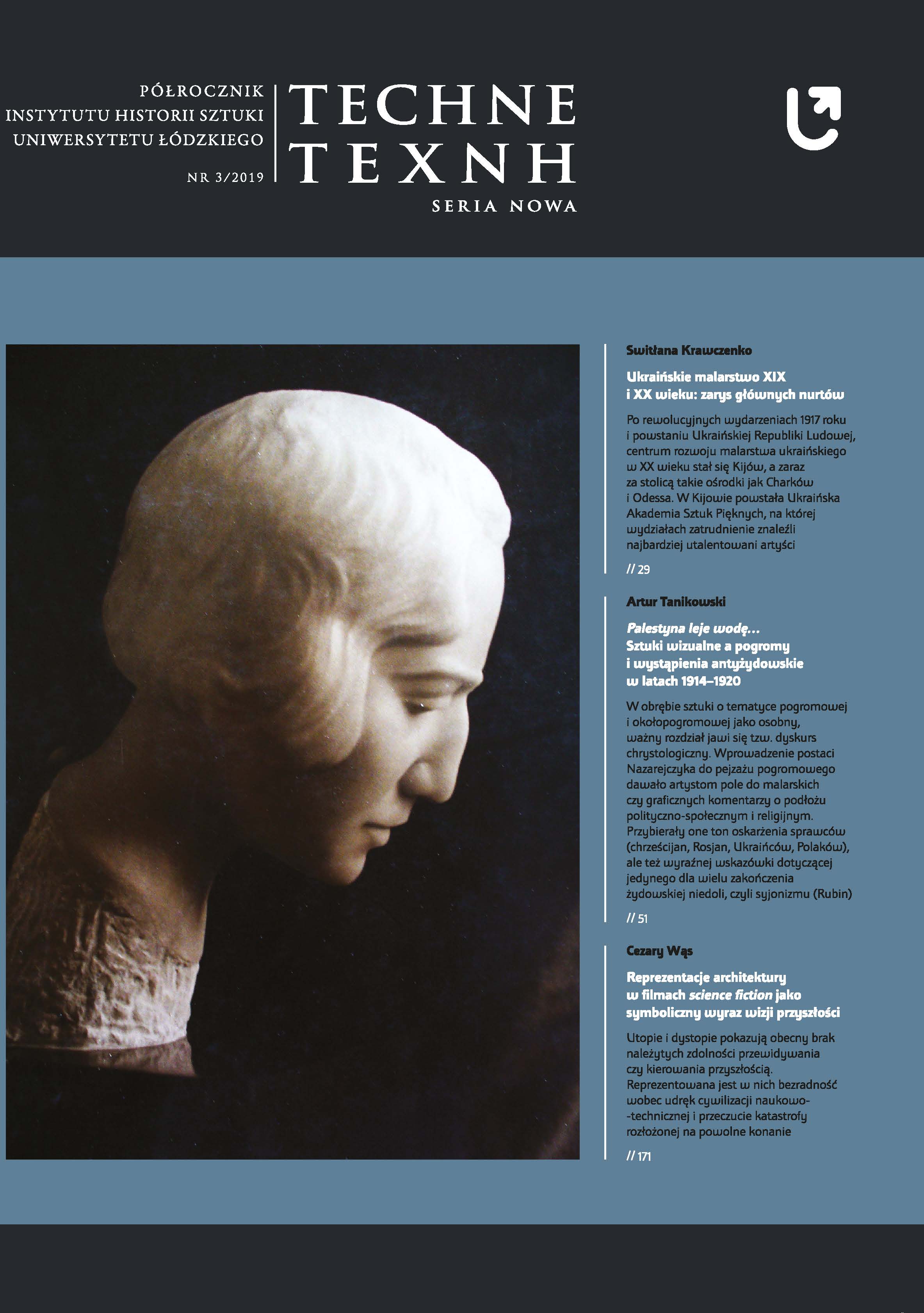O peregrynacjach artysty i jego dzieła. Przypadek "Efektu melodramy" Feliksa Pęczarskiego
About the peregrinations of artist and his work. The case of the "Melodrama effect" by Feliks Pęczarski
Author(s): Agnieszka Świętosławska, Anna TalanowaSubject(s): Visual Arts
Published by: Wydawnictwo Uniwersytetu Łódzkiego
Keywords: Feliks Pęczarski (1804/1805–1862);19th-century Polish painting;Russian collections;genre scenes;art collections
Summary/Abstract: The article focuses on the painting Efekt melodramy (Melodrama Effect) belonging to the collection of the State Museum of Art in Nizhny Novgorod in Russia.Nearly 60 years ago, Andrzej Ryszkiewicz identified it as the work of the mid-nineteenth century, Warsaw painter, Feliks Pęczarski (1804/1805–1862). Thus, Ryszkiewicz has contributed to knowledge of the unfortunately poorly preserved ouvre of this extremely interesting deaf artist. In 19th century Pęczarski was acknowledged as the author of Biedermeier portraits, but above all he was famous for his comic genre compositions in which he used the caricature of character’s physiognomy and grotesquely exaggerated facial expressions. The attribution proposed by Ryszkiewicz was fully accepted by the circles of Polish researchers as well as Russian museum staff in Nizhny Novgorod taking care of the collection. However, the question of how the painting made its way to a distant Russian province has not yet been clarified. This article is an attempt to solve the puzzle. According to a note left by the nineteenth-century memoirist Franciszek Ksawery Prek, who knew Pęczarski in person, during a few-year stay in the Lublin region (this is where the painting was made) the artist portrayed a wife of an unidentified Russian general. In 1924 the painting was taken from the castle in the village of Jurino and has become a part of the State Museum of Art in Nizhny Novgorod collection. This analysis, based on a query in old castle collection inventories and on research on the history of two aristocratic families related to the estate, Sheremetyevi and Skobelev, allowed to identify a person who could potentially be the first purchaser of Pęczarski’s work.
Journal: TECHNE. Seria Nowa
- Issue Year: 2019
- Issue No: 3
- Page Range: 11-27
- Page Count: 17
- Language: Polish

